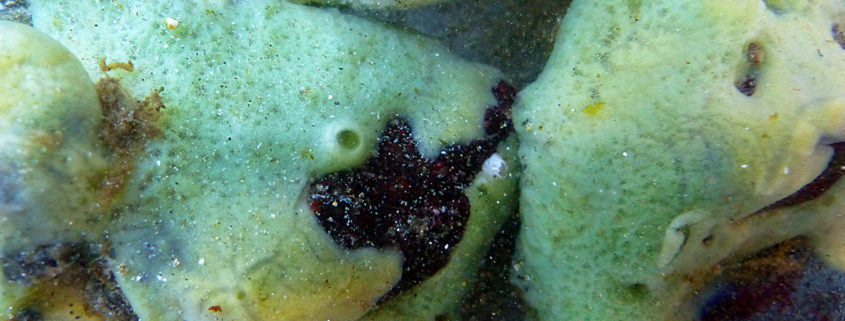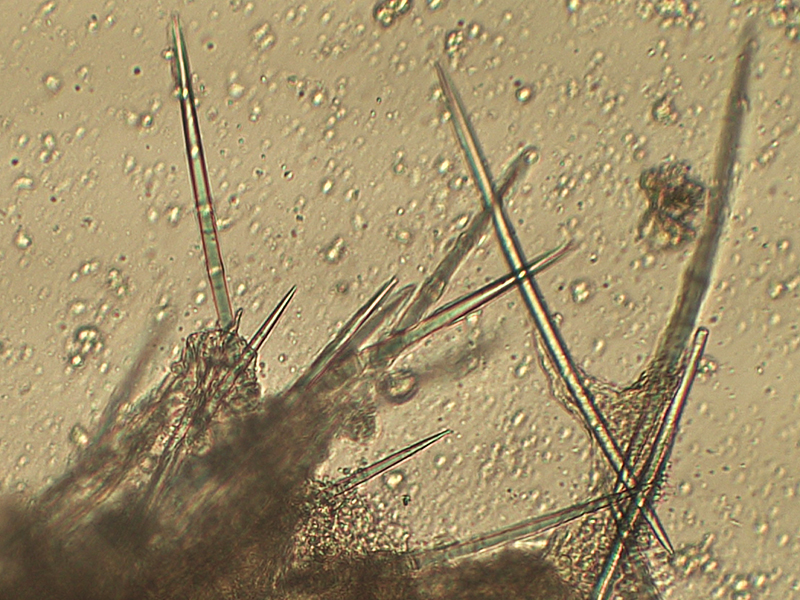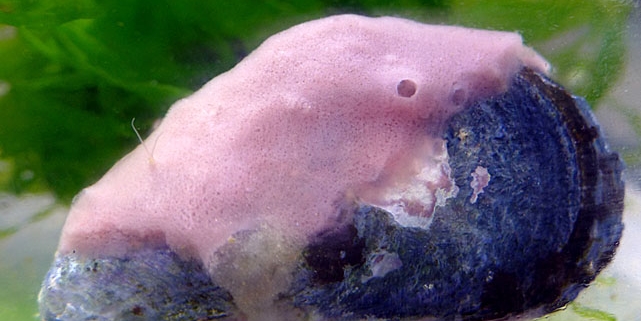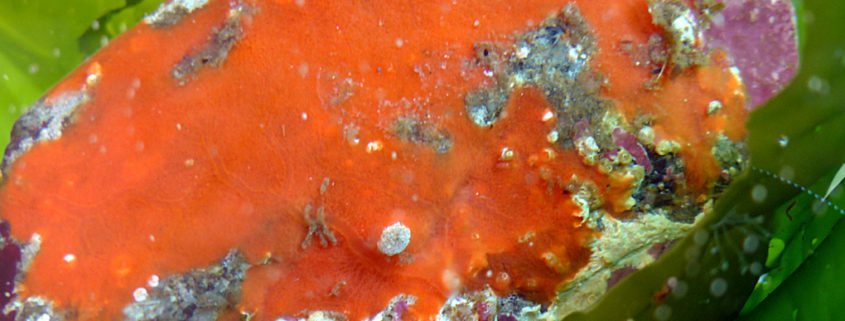Common Name: Yellow-Green Encrusting Sponge (Green Bread Crumb Sponge)
Author: Matthew Olson
Scientific name: Halichondria panicea
Size: H. panicea varies in size and is able to grow to several feet, while only growing to be about 2 inches (5 cm) thick.
Glass spicules and cells of H. panicea
Habitat: H. panicea enjoys the intertidal zone, in the crevices of the rocky surfaces, where it receive constant flow of water. It can be found in depths to at least 100m along the west coast Alaska to Mexico.
Identifying feature: H. panicea has a hard skeleton of glass spicules that are composed of silicon dioxide. It’s form can be highly varied. It can be quite smooth and at other times can be studded with the many volcano-like tubes of the oscula. It may be green, yellow, or orange in colour and often has a sharply defined margin. A distinct feature of this sponge is it’s smell. Though it is often described as smelling like exploded gun powder the one in our aquarium smells more like garlic.
References:
Lamb, A., Byers, S. C., Hanby, B. P., & Hawkes, M. W. (2009). Marine life of the Pacific Northwest: A photographic encyclopedia of invertebrates, seaweeds and selected fishes. Madeira Park, BC: Harbour Publ.
University of Puget Sound (2018). Breadcrumb Sponge (Halichondria panicea), Retrieved November 7,2018 from https://www.pugetsound.edu/academics/academic-resources/slater-museum/exhibits/marine-panel/breadcrumb-sponge/





